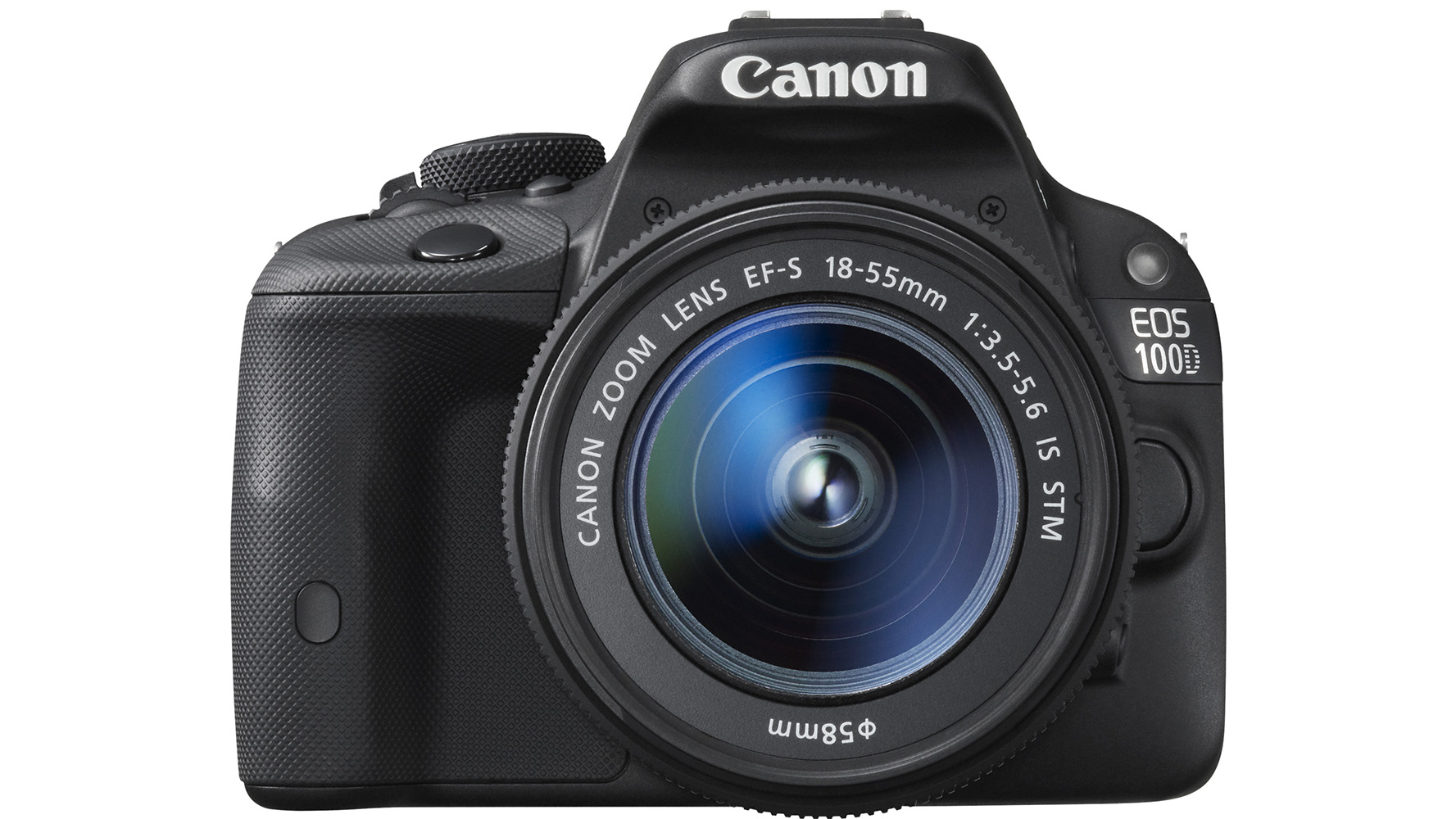Why you can trust TechRadar
We shoot a specially designed chart in carefully controlled conditions and the resulting images are analysed using DXO Analyzer software to generate the data to produce the graphs below.
A high signal to noise ratio (SNR) indicates a cleaner and better quality image.
For more more details on how to interpret our test data, check out our full explanation of our noise and dynamic range tests.
Here we compare the Canon EOS 100D with the Panasonic G5, Canon EOS 650D, Sony Alpha a58 andNikon D3200.
JPEG signal to noise ratio
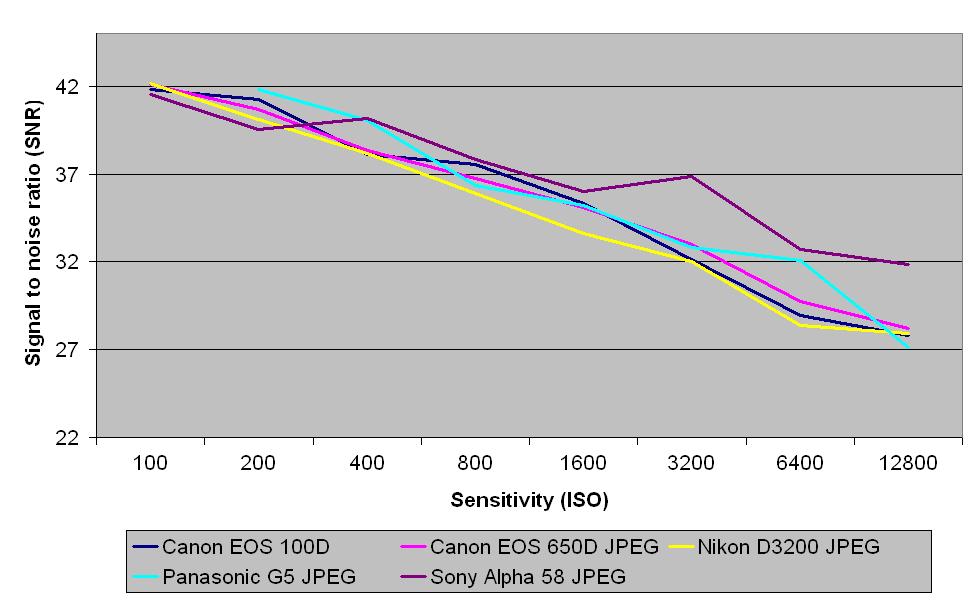
This chart shows that the Canon EOS 100D's JPEG files have a similar signal to noise ratio to those from the Panasonic G5 and Canon EOS 650D, while producing slightly greater ratios than the Nikon D3200 at every sensitivity, and slightly weaker ratios than the Sony Alpha a58 at ISO 400 and above.
This means that we can expect the 100D to produce cleaner JPEG images than the Nikon D3200, but noisier images than the Sony Alpha 58 at higher sensitivity values.
Raw signal to noise ratio
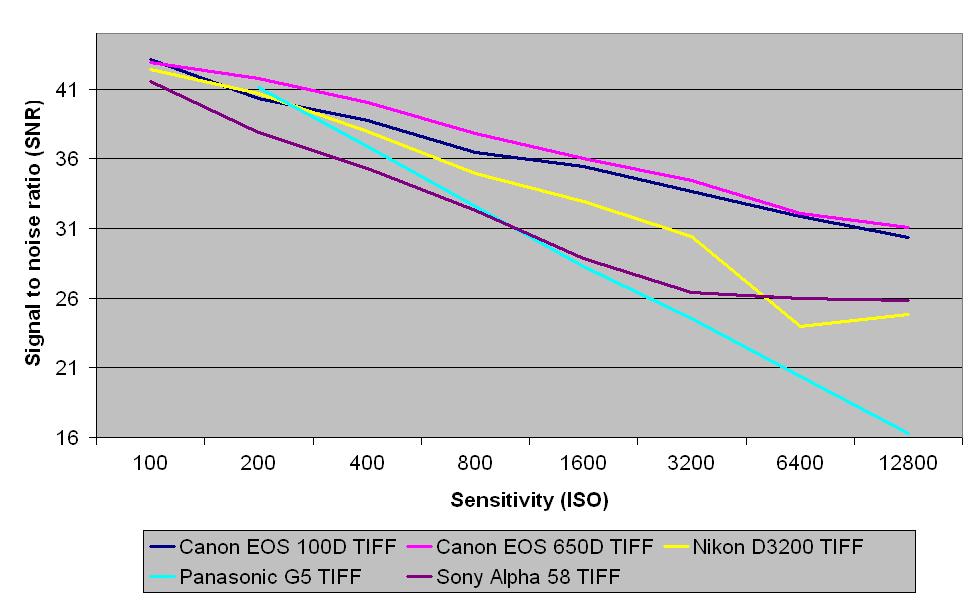
The signal to noise ratios of the TIFF images (after conversion from raw) from the Canon EOS 100D are stronger than those from the Sony Alpha a58 at every sensitivity setting, and stronger than the Panasonic G5 and Nikon D3200 at ISO 400 and above. The Canon EOS 100D's TIFF images show weaker signal to noise ratios than those from the Canon EOS 650D after ISO 100.
This means that, with the exception of the Canon 650D's images, the 100D produces cleaner raw images (after conversion to TIFF) than the competing cameras.
JPEG dynamic range
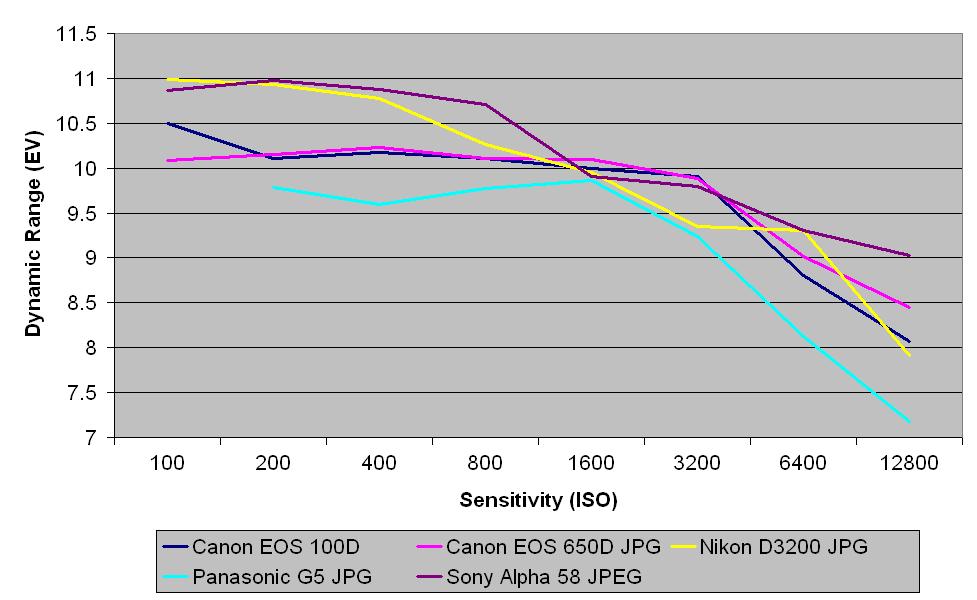
The Canon EOS 100D's JPEGs show more dynamic range than those from the Panasonic G5 at every sensitivity setting. They show weaker dynamic range than those from the Sony Alpha a58 and Nikon D3200 at ISO 100-800, after which point the results are very similar. The Canon EOS 100D's JPEGs produce very similar dynamic range to the Canon EOS 650D.
A high dynamic range means a camera can capture a wide range of tones from deep shadows to bright highlights in a single shot.
Raw dynamic range
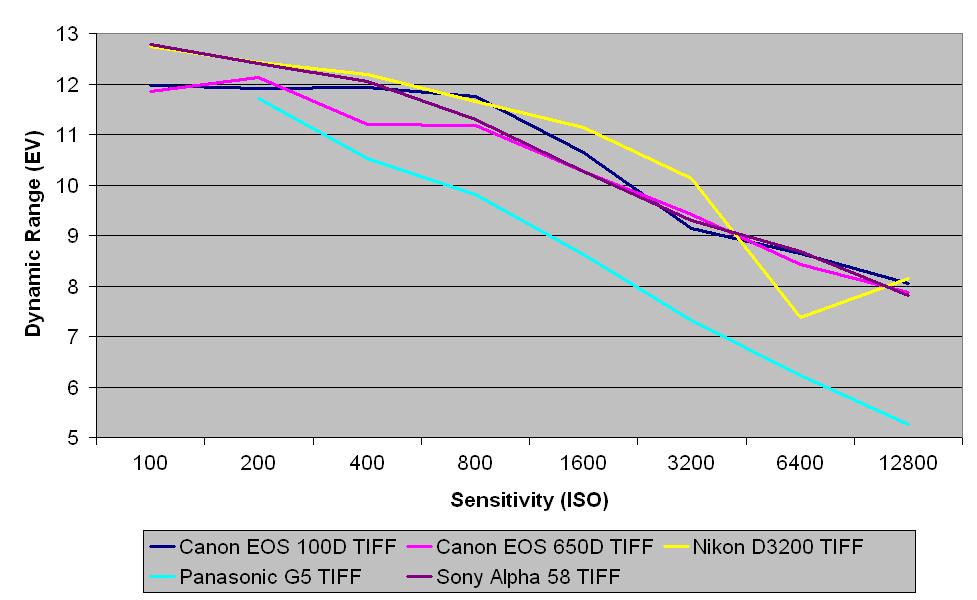
Here we can see that TIFF images (after conversion from raw) from the Canon EOS 100D again show greater dynamic range than TIFFs from the Panasonic G5 at every sensitivity. The 100D's TIFFs show similar dynamic range to the Canon EOS 650D's at ISO 100, but the 100D's have greater range at ISO 400-1600, and at ISO 6400-12800. The Canon EOS 100D's TIFFs show weaker dynamic range than the Sony Alpha a58's at lower sensitivities, but at ISO 800, 1600 and 12800 the Canon 100D comes out on top. The Nikon D3200's TIFFs beat the Canon 100D's for dynamic range at every sensitivity except ISO 800 and 6400.
Current page: Noise and dynamic range
Prev Page Image quality and resolution Next Page Sample imagesAmy has been writing about cameras, photography and associated tech since 2009. Amy was once part of the photography testing team for Future Publishing working across TechRadar, Digital Camera, PhotoPlus, N Photo and Photography Week. For her photography, she has won awards and has been exhibited. She often partakes in unusual projects - including one intense year where she used a different camera every single day. Amy is currently the Features Editor at Amateur Photographer magazine, and in her increasingly little spare time works across a number of high-profile publications including Wired, Stuff, Digital Camera World, Expert Reviews, and just a little off-tangent, PetsRadar.
